Fuchsias can play a special role in your garden. While most shaded areas in your landscape may be filled by default with green foliage, fuchsias add spots of bright color in shades of pink and purple. Hybrid fuchsias (Fuchsia x hybrida) feature some of the showiest flowers, with hundreds of varieties, and are the most commonly available fuchsia plants.
These tender perennials are most at home in areas with cool summers and warm winters, but they can and often are treated as annuals in other areas. If you’re lucky enough to live where they’ll handle the winters, you can keep them coming back again and again.
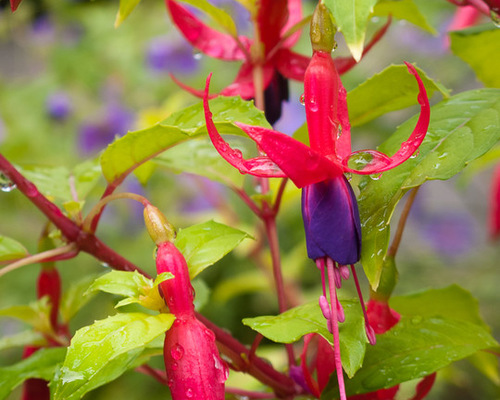
Fuchsia 1: Le Jardinet, original photo on Houzz
Botanical name: Fuchsia x hybrida
Common names: Fuchsia, hybrid fuchsia
Origin: Garden hybrid; the species is from the tropical mountains of North and South America, primarily Mexico, Argentina, and Chile
Where it will grow: Hardy to 10 degrees Fahrenheit, or minus 12.2 degrees Celsius (USDA zones 8 to 12); can be grown as an annual in cool, shaded locations in all zones
Water requirement: Regular
Light requirement: Full sun in foggy or cool-summer areas; otherwise provide partial to full shade
Mature size: 1 foot to 8 feet tall and up to 5 feet wide
Related: Grow Them in a Sunroom
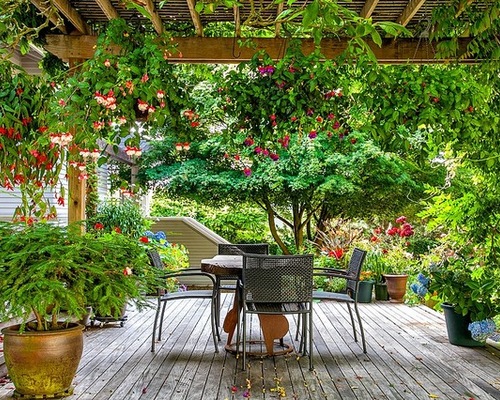
Fuchsia 2: Rosichelli Design, original photo on Houzz
Benefits and tolerances: Great container plant that provides color and interest in shaded areas; ideal for areas with cool summer temperatures; flowers attract birds, including hummingbirds
Seasonal interest: Brilliantly colored flowers with a weeping habit from spring to fall
When to plant: Spring
Related: Attract Birds with a New Bird Bath
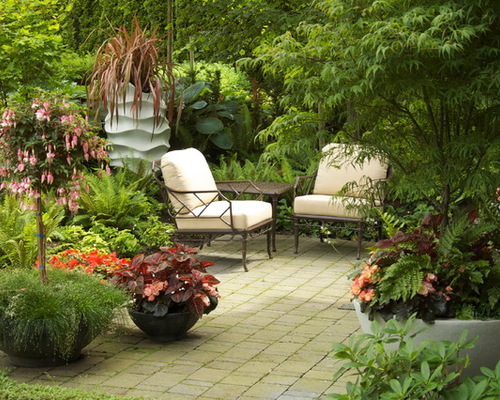
Fuchsia 3: CYAN Horticulture, original photo on Houzz
Distinguishing traits. The plants feature single and double flowers with a distinctive weeping shape in various shades of pink, magenta, violet, purple, and white. Choose upright fuchsias for standard containers and weeping fuchsias for hanging baskets.
How to use it. Plant fuchsias in containers to add color to a shaded patio, deck, or garden. You can also plant them in the ground in zones where they’re hardy. Train one as a small tree for an unexpected highlight.
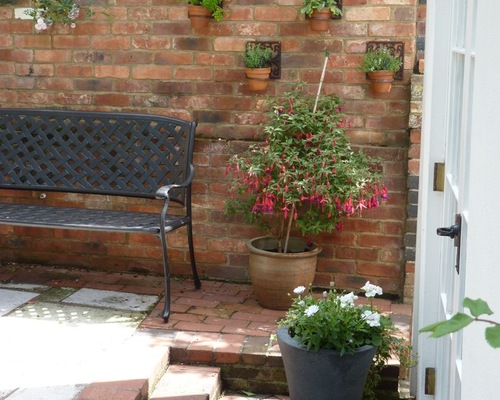
Fuchsia 4: Cornus Garden Design, original photo on Houzz
Planting Notes
? Plant in well-draining soil that is rich in organic matter, whether you’re growing in a pot or the ground. If growing in the ground, plant deeper than usual to help provide winter protection.
? Water regularly to keep the soil evenly moist but not soggy. In arid locations, consider misting periodically to increase the humidity levels. Some experts also recommend watering by placing ice cubes around the plant to cool down the soil. Cut back watering toward the end of summer if you’re over-wintering the plants.
? Fuchsias are subject to some pests, such as aphids, spider mites, and whiteflies, which can be removed with a spray of water or horticultural oil.
? Disfigured leaves are usually the result of fuchsia gall mites. Cut or pinch off any disfigured areas and get rid of the leaves away from your garden or compost. Sterilize any tools that came into contact with the area before using them again.
? Hanging containers will do best if brought to a cool, somewhat dark spot during winter. In-ground plants will enter winter dormancy; protect them with 5 to 6 inches of mulch.
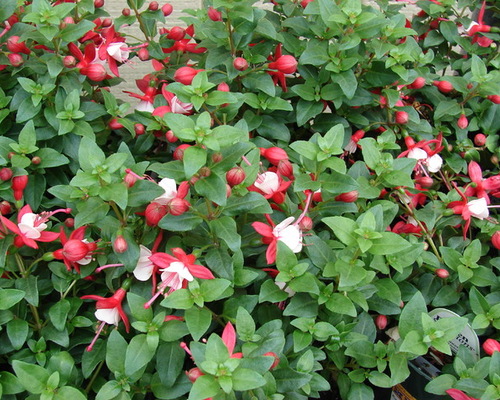
Fuchsia 5: Forest and Kim Starr, original photo on Houzz
? Feed at half strength with a complete 20-20-20 fertilizer every two weeks while the plants are blooming or until late summer.
? Deadheading regularly will increase the number of blooms, although fuchsias tend to stop flowering in the warmest weather.
? Pinch back the stems of container plants in early spring before growth starts to encourage bushiness. For in-ground plants, prune once the danger of frost has passed, and remove only what is needed to get rid of broken or crossing branches or to shape the plant.

